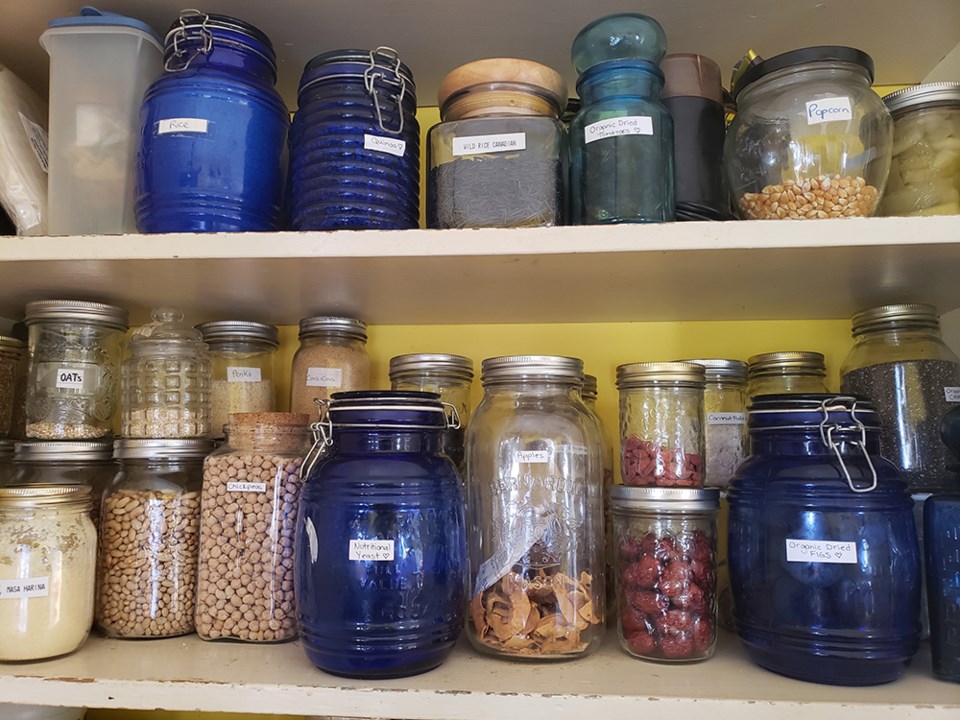Green thumbs know all about it: the deep satisfaction of a full pantry.
It’s no small feat providing healthy, local, plastic-free food for yourself, let alone for your family. Time, know-how and access to soil, farmers’ markets and bulk food retailers are needed. Along with these, we need the ability to discriminate what packaging is greenwashed and which foods are hyped up as natural and wholesome.
Given the maze that is the industrial agriculture system, it is a wonder that we come home from a grocery store visit with any nutrient-dense, minimally packaged food. Navigating these treacherous waters is simplified by following a few guidelines.
Grow food. Eat local. Shop in bulk. Preserve.
Growing our own vegetables is the most likely way to achieve minimal packaging. Certain healthful vegetables that are easy to grow in our climatic zone include kale, broccoli and peas, all of which can be directly seeded into the soil now.
Even apartment dwellers can get into growing food on their balconies. Vertical soil gardens or self-watering aeroponic setups make efficient use of limited space. You might start with growing microgreens inside, instead. Sunflower microgreens are a great, vitamin-packed plant containing calcium, iron, potassium, selenium, zinc, magnesium and phosphorus.
If the peak of summer was so busy you preserved the land’s bounty by freezing fruit and blanching and freezing veggies, now could be the time you evaluate your coffers. If you have mountains of untouched fruit, why not make some fruit leather, naturally-sweetened syrup or a crumble? Vegetables can come out to be incorporated into a satisfying soup on the cooler days of spring that we are still amidst.
When we don’t have time or space to grow at home, we can shop locally. Nettles are prolific this time of year and professional pickers are selling bags of these steamable greens at local grocers. Indigenous populations used to eat mountains of this plant in the spring to naturally detoxify and nourish after winter’s stagnancy.
Supporting local pickers and growers keeps these small-scale businesses alive and growing. When farmers’ market pickings are meager, it’s good to make a note that we can preserve this coming summer’s bounty by pickling, dehydrating, fermenting and freezing to make local food available to us throughout more of the year.
Seasoned foragers are perhaps the most savvy, as they save both money and the time of nurturing a garden and simply seek local greens, berries and herbs in forests and meadows. Finding a knowledgeable guide to help you safely identify local food can expand your access to it. Herbalists and library books on herbology might also teach you how to extract and preserve oils, nutrients and minerals from what you forage or buy at markets.
Buying in bulk is a great, low-waste way to fill in the gaps of food we can’t get locally. Storing bulk buys in mason jars and colourful glass containers from thrift stores keeps them easy to find and inspiring to cook with. Extra bulk products can be preserved longer by freezing – great for nuts – and by removing the air with a vacuum sealer.
When it comes to food, what more could we ask for than low waste and high vibes? Enjoy rooting into local produce this season.
Let’s Talk Trash is qathet Regional District’s waste reduction education program. For more information, email [email protected] or go to LetsTalkTrash.ca.



